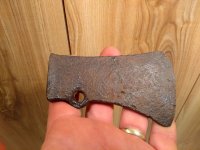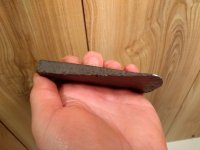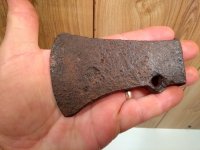cellerfeller
Full Member
- May 15, 2019
- 105
- 201
- Detector(s) used
- Garrett Ace 400i
- Primary Interest:
- All Treasure Hunting
I am hoping this will be an easy one - I dug a shingle hatchet at a local cellar recently. Not far away from it I pulled this wedge out of the ground. I have never seen one quite like it before. It is 4 1/2" long with a 2 3/4" blade end and a hole loop for hanging. It seems very thin to be a timber faller's wedge. Any thoughts would be appreciated.












